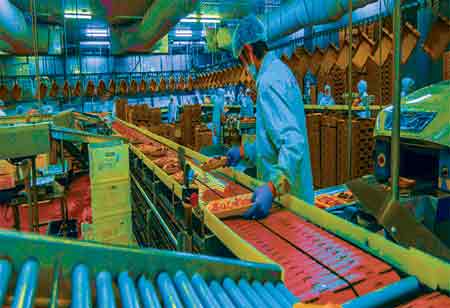Thank you for Subscribing to Food Business Review Weekly Brief
- Home
- Topics
- Alternative Proteins and Plant Based Food
- Beer and Wine
- Canned Beverages
- Coffee And Tea
- Food and Beverage Consulting
- Food and Beverage Financial Service
- Food And Beverages Marketing
- Food Distributors
- Food Ingredients
- Food Sustainability
- Plant Based Food and Beverages
- Seafood Suppliers
- Supplement Manufacturing
- Wine Investment
- News
- Vendor Viewpoint
- CXO Insights
- Conferences
- Newsletter
- CXO Awards
-
What Are the Major Challenges Faced by Wholesale Food Distributors?
Although the pick, pack, and ship method of wholesale food distribution may appear straightforward from the outside

By
Food Business Review | Thursday, January 18, 2024
Stay ahead of the industry with exclusive feature stories on the top companies, expert insights and the latest news delivered straight to your inbox. Subscribe today.

The wholesale professional has to appeal to the convenience, effort, interfaces, and additional values that are relevant to promote client preference. To match the demand for these sought items, distributors must continually modify their inventory and sourcing strategies, which may take time and effort.
Fremont, CA: Although the pick, pack, and ship method of wholesale food distribution may appear straightforward from the outside, the business faces increasingly complex difficulties from its clients. They maintain a crucial intermediary in the supply chain to connect with distributors, which affects companies, grocers, eateries, and other food service providers. In today's competitive, post-pandemic market, wholesale food wholesalers are more critical than ever. Here are some primary challenges they are expected to face as businesses are pressured to optimize procedures and adjust to shifting concerns.
Consumer Trends
Everything about consumer tastes is altering, from eating patterns to wardrobe choices. Based on a customer's expectations, the demand curve for a particular product rises, ultimately increasing the price. The wholesale professional has to appeal to the convenience, effort, interfaces, and additional values that are relevant to promote client preference. To match the demand for these sought items, distributors must continually modify their inventory and sourcing strategies, which may take time and effort.
Transportation
The most significant function of wholesale food distributors is prompt and safe delivery. Convenience shops, restaurants, and other food service organizations generally acquire substantial amounts of food goods from various sources from wholesale food wholesalers. The distributor oversees the movement of products from producers to retailers, which might be delayed due to bad weather, heavy traffic, and supply chain hiccups.
Fresh Products
Food and beverage distributors are also responsible for ensuring the quality & freshness of their products, particularly perishable products like fruit, dairy products, and meats. It's also not that easy because the existing system needs to account for storage and shipping time, which might cause things to deteriorate rapidly. For instance, ice cream must be frozen to maintain freshness while in transit, but other delicate foods require protection from light, air, and moisture. A trailer, van, or vehicle with refrigeration can be used for this.
Inventory and Product Waste
Managing inventory is an essential component of the distribution cycle when cutting waste. Detailed inventory tracking is required to show quantity levels and turnover rates. Distributors may detect slow-moving items, reduce overstocking, and prevent stockouts by keeping accurate records, ensuring they only buy and stock the required supplies. The specific location for inventory checks is a sizable warehouse that can store vast numbers of commodities following their needs. To reduce the risk of spoiling, damage, and waste due to incorrect handling, products should be kept to meet their specific temperature and humidity requirements.






